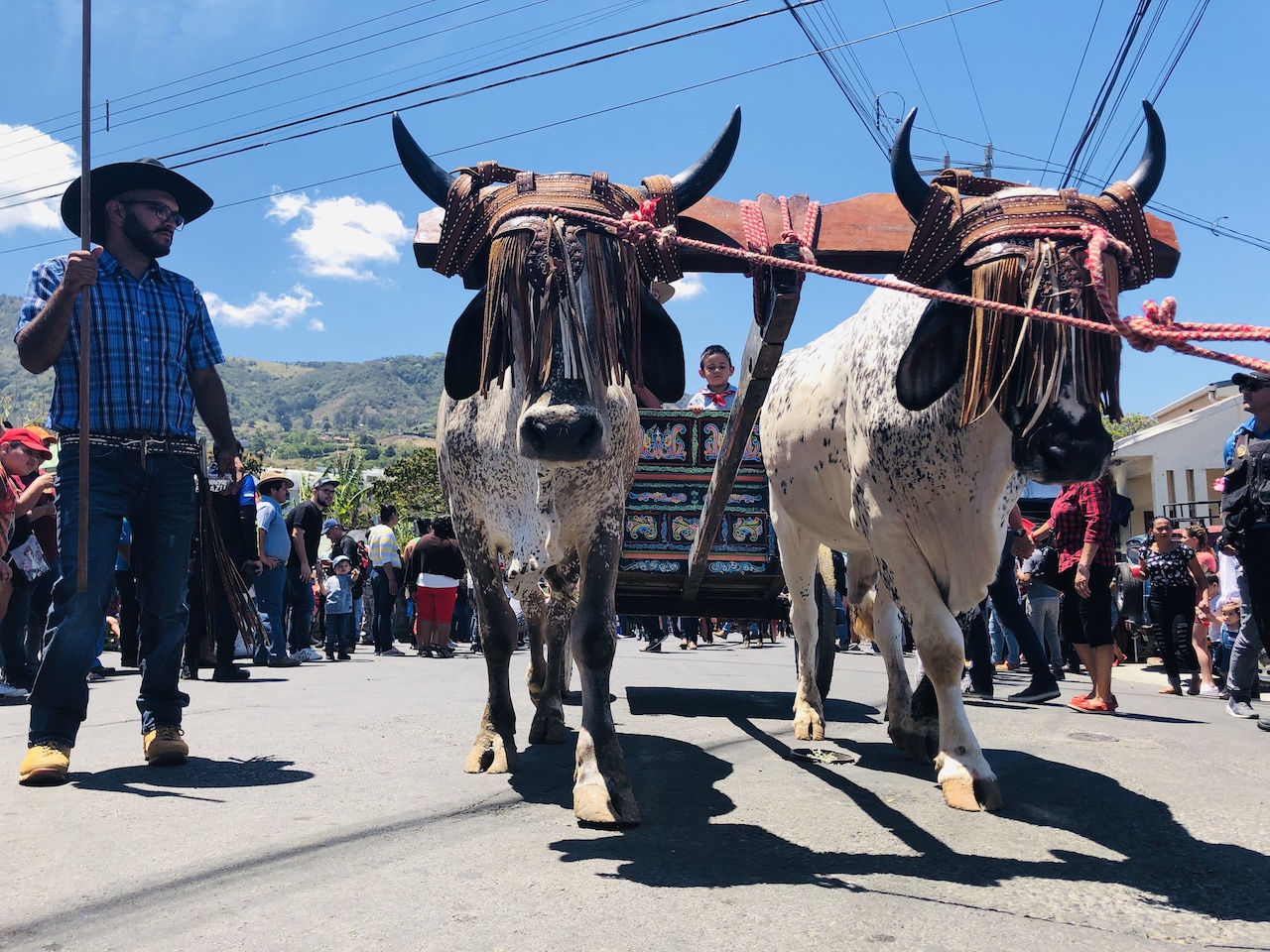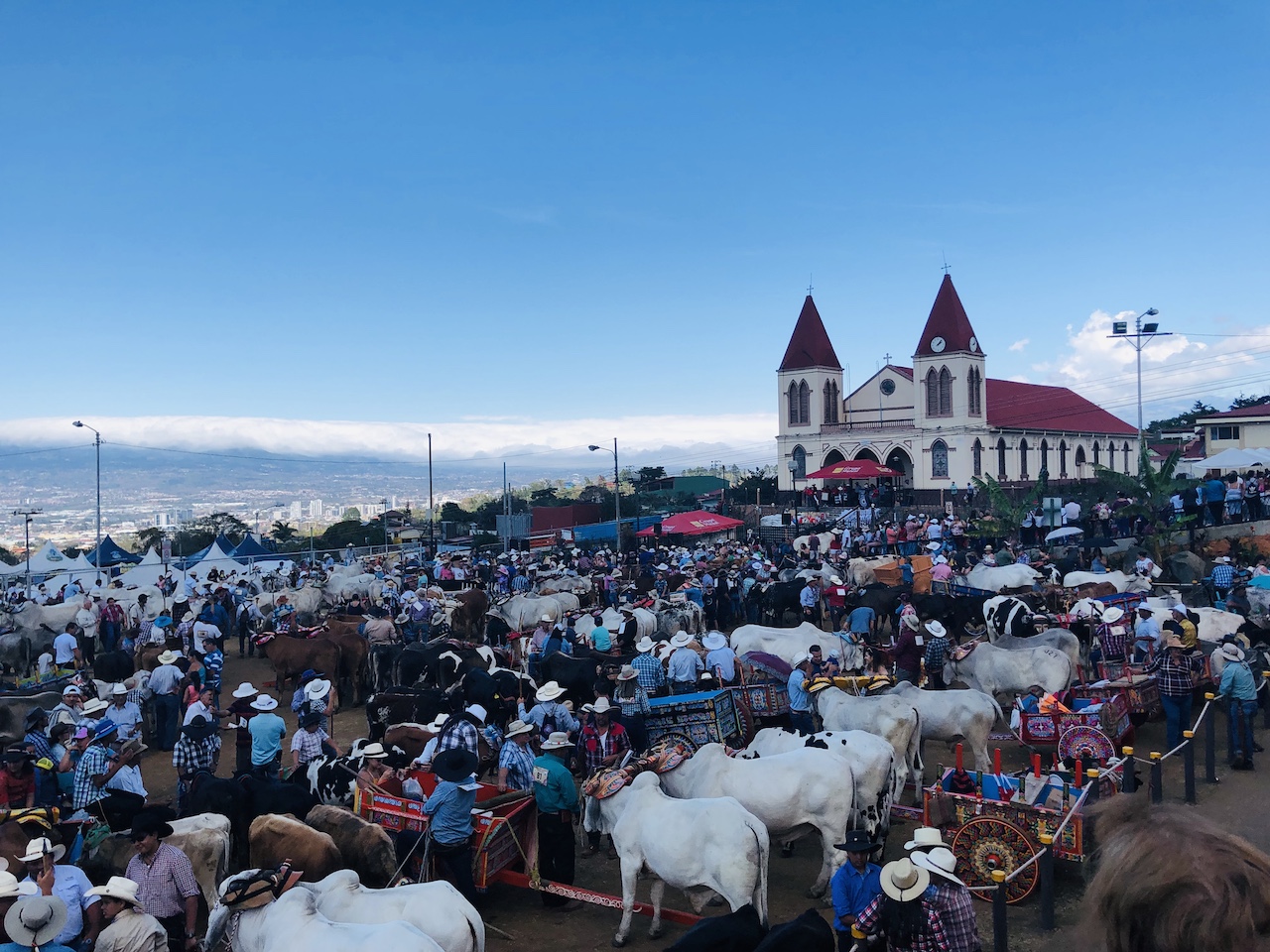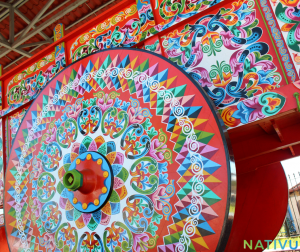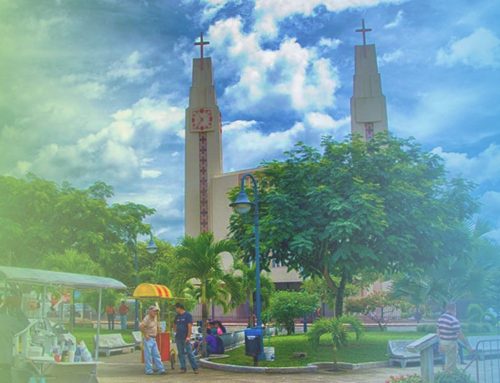The herdsmen, known as Boyeros in Costa Rica are dedicated to raising, fattening and shepherding oxen. Their profession was created for the commerce of meat and to ensure that the product is cared for in the best way. Additionally, the herdsmen began to use oxen to help them move the products safely.
The story of the herdsmen:
According to UNESCO data, the traditional oxcart is the most famous type of craft in Costa Rica. Since the mid-19th century, they were used to transport coffee beans from the Central Valley of Costa Rica, in the mountains, of Puntarenas on the Pacific coast. A trip required 10 to 15 days.
The oxcarts had spokeless wheels, a hybrid between the disk used by the Aztecs and the spoked wheel introduced by the Spanish, to move through the mud without getting stuck. In many cases, oxcarts were the only means of transportation for a family and symbolized their social status.
The herdsmen are mentioned in the book “Costa Rica en Juan Bosch” by Armando Vargas Araya in a letter written in 1951 by Juan Bosh, a Latin American who wrote letters to his wife Teresa about his experiences in Costa Rica.
In the letter, Juan narrated that he was struck by the fact that in Costa Rica donkeys or horses were not used to pull carts but rather “slowly walking oxen“, such big animals yet so tame.
National Herdsmen day in Costa Rica

In October 1998, Executive Decree No. 18483-C declared National Herdsmen Day to be celebrated every second Sunday in March. The activity consists of cattlemen taking to the streets with their colorful carts and their best oxen to fill the Central Valley with culture and history, ending the tour at the venue of the event in San Antonio de Escazú.
This tradition was registered in 2008 as an Intangible Heritage of Humanity by UNESCO, since it represents the hard work of the Costa Rican herdsmen, his Oxen and flamboyant Oxcart.
Origin of the herdsmen parade in Costa Rica
They began in the second half of the 19th century as part of the activities for the cult of San Isidro. Over time, they became a vital element of the local festivities in communities inside and outside the Central Valley. The parades began to gain fame and became an important part of different activities and celebrations at the national level; Contests such as the one for the best-painted oxcart were even added to the parade.
These parades nowadays are essential in religious celebrations, festivals, and regional and national civic commemorations.

National Symbol: La Carreta (Costa Rica’s Oxcart)

In the work of the Costa Rican herdsmen, “La carreta” stands out; this tool was used to transport different products over long distances.
For many years, carts were the only means of transportation for peasant families and they measured their social status. The tradition of the painted oxcart started around the 20th century and the designs and styles were different, however, at that time the most common designs were flowers, faces, and landscapes. According to UNESCO, the oxcart is the most famous craft in Costa Rica.
Costa Rica keeps its cultural roots very present even today. If you want to know about excellent investment options throughout the territory, do not hesitate to contact our specialized advisors.









